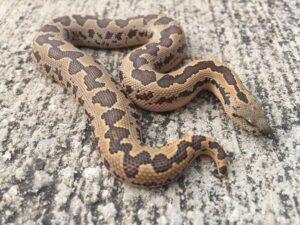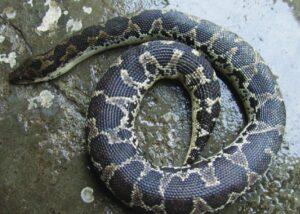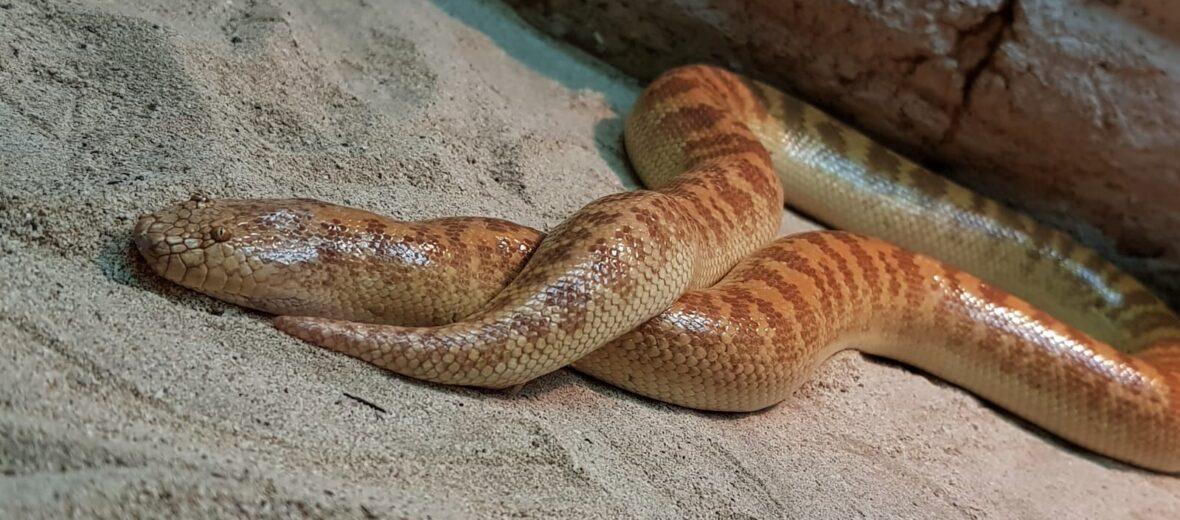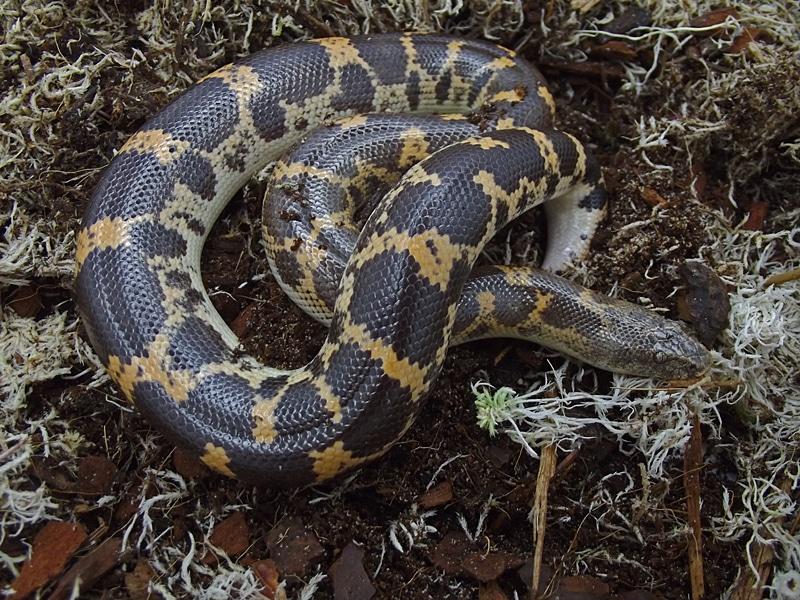
The rough-scaled sand boa is also known as Russell’s boa due to its similarity with the highly venomous Russell’s viper. The native of southeastern Asia is cryptically colored, heavy-bodied, and has a small head and short tail. It moves very slowly and is sluggish. This, combined with its docile nature, small size, and easy upkeep, has endeared it to the pet trade.
Conservation Status
Description
Size
They attain a total length of around 3 ft 3 inches (99 cm), including a 3 inch (76 mm) long tail.

Color and Appearance
The color varies greatly among individuals, but the pattern is mostly consistent. It is a series of dark blotches against a light background. Often, this dark pattern takes a zig-zag form. The background color is usually light brown, yellow, or tan, while the pattern color can vary from dark brown to rusty red, even black. The belly is white. Though the boa makes an attractive pet, it has no morphs.
The shovel-like snouts of these snakes help them in burrowing. Their thick and stout bodies are covered with small, highly keeled scales. Their tiny eyes have vertical pupils, and pointed tails are slightly prehensile.
Rough Scaled Sand Boas at a Glance
Distribution
The species can be found in India, south of the 30°N latitude (south and central India, Punjab, Sind, and Kachchh regions), Bangladesh, Nepal, and the arid northern part of Sri Lanka.
Habitat
They inhabit arid, semi-desert regions with sandy tracts.
They spend a long time buried in sand or loose soil with only their noses and eyes jutting out. Active during dusk and night, these constrictors lie and wait for their kill.
Lifespan
In captivity, the boas can live up to 30 years with good care.
Predators
It doesn’t have any natural predators.Humans kill them, mistaking them for the Russell’s viper.
Diet
It preys on small mammals and birds by constricting.
Reproduction
Viviparous (females give birth to live young)
Copulation occurs in mid-March, with the young being born between late May and August. A gravid female doesn’t like to feed through the entire gestation period and gives birth to 3-12 babies at night.
Care Sheet
Size of the Enclosure: 36 inches (length) x 18 inches (width) x 12 inches (height) is the suitable tank size for housing an adult rough-scaled sand boa.
Temperature: As the boa likes to bask, you should provide abasking spot with a temperature between 90°F and 95°F. It can fall to around 80°F at the cool side of the enclosure. The thermal gradient is enough to help the snake thermoregulate.
Humidity: The average humidity in its enclosure should be 50-65%, and a non-porous water bowl should be included.
Substrate: The substrate should be such that it allows the snake to burrow, as that is its nature. Sand, fine gravel, and aspen bedding work well.
Substrate: The substrate should be such that it allows the snake to burrow, as that is its nature. Sand, fine gravel, and aspen bedding work well.
Feeding: The babies can be given pink mice every 7-10 days. 3-4 week old mice can be fed to adults every 2-3 weeks.
Source
i.pinimg.com, researchgate.net




